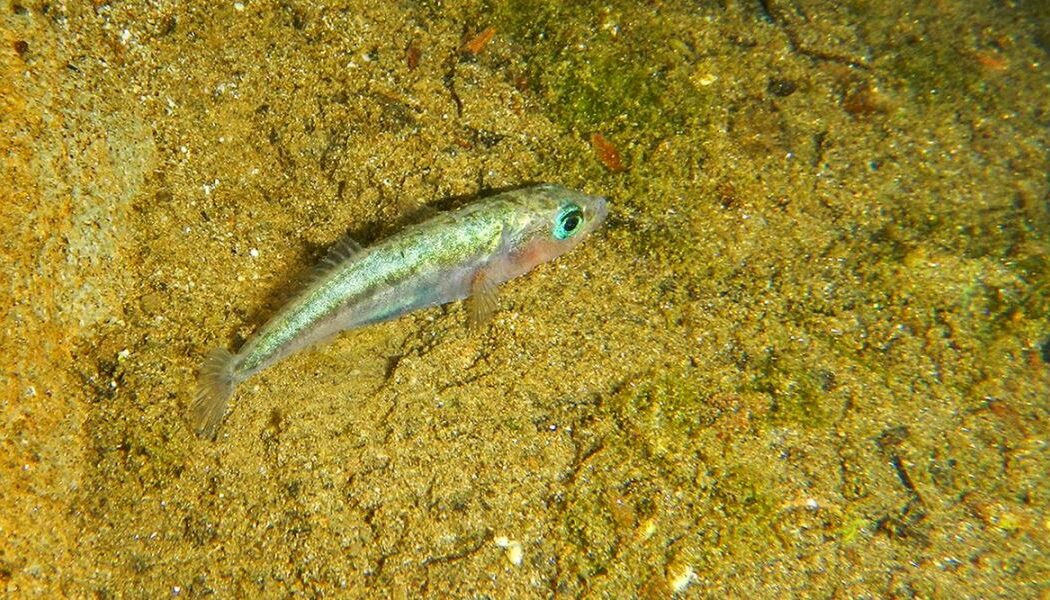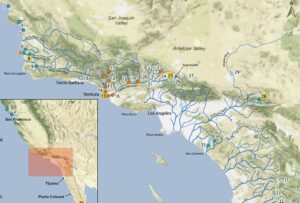In California, dwindling water resources and urban sprawl are leaving a group of residents you’ve probably never heard of on the verge of homelessness.
The unarmored threespine stickleback fish, highly adapted to thrive in California’s often short-lived, unpredictable waterways, has been long considered by scientists a model species for studying evolution and a top concern for conservationists.
It has been on the endangered species list since 1970 and is still in peril.
Now, a University of California, Los Angeles (UCLA)-led effort to sequence the fish’s genome has identified genetically distinct populations in Southern California that could guide measures to save the subspecies, such as using fish chosen for their genetic background to repopulate waterways in the Los Angeles Basin, where they once lived.
The study determined that coastal and upstream populations are different enough — with the upstream group being much smaller and in greater danger of disappearing — to merit interventions that protect their genetic uniqueness.
The research, which was published in the journal Molecular Ecology, was conducted in partnership with the U.S. Fish and Wildlife Service and the U.S. Geological Survey.
“Low-plate stickleback fish are doing well in coastal lagoons, but unarmored sticklebacks are not doing well elsewhere,” said co-author David Jacobs, a professor of ecology and evolutionary biology.
“They are very near to dying out completely in the upper Santa Clara River, the location in which they were first discovered and described by scientists. Re-establishing more populations in the wild that represent the genetic lineages we have in Southern California is how we can make sure our genetically distinct sticklebacks persist,” he added.
Scientists have studied sticklebacks for decades, but efforts to protect the species have been complicated in part by a lack of information about the genetic relationships between Southern California’s unarmored sticklebacks and sticklebacks with armor.
To date, many of the conservation efforts have been guided by their morphology — meaning their shape and appearance — rather than their genetics, and have been only minimally effective, the study found.
“Our study is the first to document that Southern California’s unarmored stickleback populations are genetically distinct and in urgent need of better protection,” said first author Rachel Turba, who led the research as a doctoral student.
“Existing conservation measures have served us well for decades when genetic data was not available and even now, for the most part, they have helped steer focus for our most endangered population in the upper Santa Clara, but with this new and future genomic data we can do even better,” continued Turba, who is now a lecturer in the life sciences division of the UCLA College.
Threespine sticklebacks typically measure about 2 inches long and come in three varieties: Armored, low-armored and unarmored. The armored variety has bony plates that protect it from predatory fish. The unarmored subspecies, Gasterosteus aculeatus williamsoni, is native to California and is rarer than their armored counterparts.
The animal is endangered due to stream channelization, urban development, drought and wildfires.
Using DNA samples from sticklebacks captured in coastal lagoons, rivers and streams from a wider geographic region — Marin County, California, to Mexico — the scientists determined that sticklebacks in Southern California fall into two broad genetic groups.
One of those groups lives on the outer coast in streams and coastal lagoons from north of Point Conception in Santa Barbara, all the way south to Mexico.
The other group lives in a few of the remaining streams and rivers roughly from Santa Barbara to San Diego, often occupying upstream habitat far from the coast — east of Santa Clarita and even in the San Bernardino Mountains, for example. But that “upstream” group is a relic of what once was a much wider distribution, and it is highly endangered.
Scientists think some sticklebacks lost their armor as they began to live in drier habitats with fewer of the larger fish that preyed on stickleback. Without the need to grow bony plates, the unarmored subspecies mature more quickly than other sticklebacks and can take advantage of short-lived waterways to breed and disperse. Those adaptations helped them survive the variability in rainfall and streamflow in Southern California.
Although most of the fish die when streams dry up, enough of them have been able to survive in shallow pools until the next rains arrive. Over time, as opportunities to interbreed dwindled along with the water, the genomes of coastal populations diverged from those in the streams of Southern California.
Today, the precarious Southern California environments in which the tenacious little fish survived for millennia have become even more fragile, with many of their habitats drained or destroyed. But Jacobs said there are low-flow streams and other places in the Los Angeles Basin where, if certain modifications are made and if exotic species are kept away, the fish could live.
“People are big on restoring trout, and that should definitely be done,” Jacobs said. “But it is probably a lot easier and a good first step to that end to restore unarmored stickleback populations because of the smaller amount of free-flowing water required.”
Restoring the fish will also require protecting their habitats.
“Maintenance of the habitat itself is as important as rewilding of the populations,” Turba said. “How are these species expected to survive? Freshwater fauna are in peril in Southern California, and their dismissal most likely signals bad news for us too.”
Featured photo courtesy of U.S. Fish and Wildlife Service.


